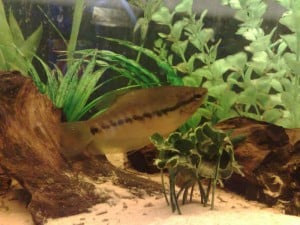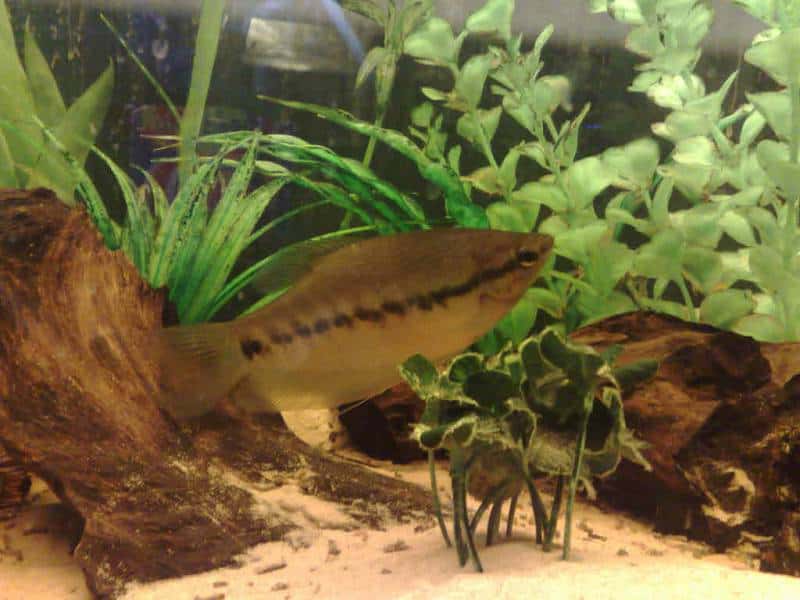
Common name: Snakeskin Gourami
Scientific name: Trichogaster Pectoralis
Average Adult Fish Size: 10 inches / 25 cm
Place of Origin: Southeast Asia
Typical Tank setup: A well planted aquarium with tall or floating plants to provide shade is appreciated. Additional rockwork and bogwood/driftwood completes the look and will keep this fish busy investigating its’ environment.
Recommended Minimum Aquarium Capacity: Smaller specimens can easily be kept in a 30 gallon / 120 litre aquarium, but fully grown adults, especially spawning pairs, should be kept in at least 60 gallons / 240 litres or more.
Compatibility: Snakeskin Gouramis are peaceful, but do not keep them with small fish as they will eat them! They are best if kept with fish of similar size and temperament.
Temperature: 73 – 82 Deg F / 23 – 28 Deg C
Water chemistry: pH 6.0 – 8.0
Feeding: Smaller specimens do best on a varied diet of quality flake foods, pellets, brine shrimp and daphnia. Larger fish should be fed pellets, and chunks of frozen foods like brine shrimp and beef heart, along with earthworms and chopped market shrimp.
Sexing: Males are more brightly colored than females and thinner. Females are duller and fatter. The dorsal fin of the female is rounded and the males is pointed.
Breeding: Breeding Trichogaster pectoralis (Snakeskin Gourami) requires a large aquarium. The males build bubble nest on the surface among plants. Minimizing surface water movement is a good idea. The spawning can be triggered by raising the water temperature in the aquarium and lowering the water levels all the way down to 4 inches/ 20 cm, but often dropping the water level in 4 – 5 inch daily increments is enough to trigger spawning. The male will guard the eggs and fry until they become free swimming. Remove the female after spawning. Fry need to be fed infusoria for the 1st week or so. After that they will readily eat baby brine shrimp or very finely crushed flake foods.
Additional Information: They are a good larger community tank fish. They are also a food fish in parts of Asia.


Related Posts
Croaking Gourami – Trichopsis vittatus
Benthochromis Tricoti
Large-eyed Mouthbrooder – Callochromis Macrops